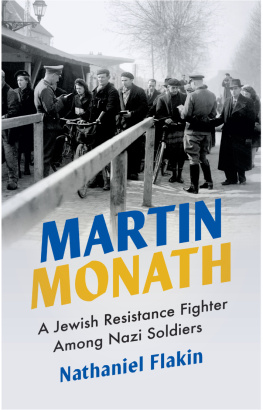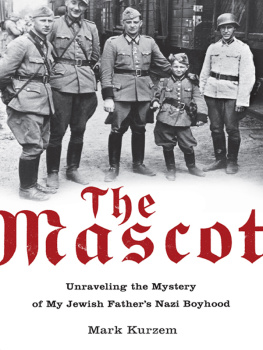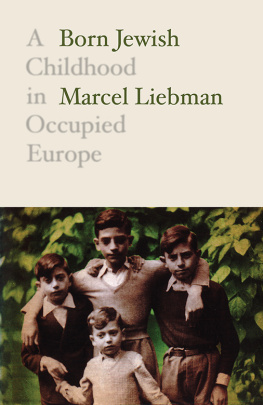
To my Daughter Gabrielle for her love and support
Follow two New York detectives and Israeli
commandos, as they hunt down a stolen painting.
Along the way, they capture a Nazi and his hoard of
stolen art. The chase continues in China, where a
millionaire is in for a big shock. End up at a
Jewish/Buddhist wedding.
Short, overweight, almost completely bald, about seventy years old. The kind of man you wouldnt notice unless you tripped over him. The only remarkable thing about him was a bullet hole in his forehead.
The body was dragged to the edge of the beach. A trail of blood on the sand would be the last signature this man would ever make. Using his belt, a cement block was tied to his waist. Loaded onto a small boat, his last trip would be two miles off the coast, where he was unceremoniously dumped overboard.
Hopefully, never to be found.
In the hot desert of southern Australia, water is key to survival. Without it, many men have perished. Youre easy prey for vultures. A sight known as Coober Pety which means white man in a hole", (kupi-piti, in the Aboriginal language,) is located about 500 miles northeast of Melbourne.
Several gold rushes have occurred since 1851,many years before the discovery of gold in the Klondike. When gold was discovered near Orange in New South Wales. Prospectors by the thousands descended on Australia seeking their fortunes. Most, of course, ended up broke and broken in spirit. Rather than returning home with new-found wealth, many miners died of heat exhaustion. But the lust for gold is not easily extinguished.
A small, ragged group of prospectors, One-armed Jake, Joe, fat Louie and a young boy named Willie, out looking for a sign of gold ore, were running out of all-important water.
Joe: Willie, dont be a blodger! Get out there and find some water, Im as dry as a dead dingos donger! Dont go near the billabong. You may get caught by the bunyip, he eats kids alive. And dont have a naughty with a stray sheep. And stay away from the swamp, theres lots of gators round there, you dont want to feed one, like Jake here and lose an arm.
On February 1, 1915, Willie Clarkson a young and deeply tanned boy with a head of tousled wheat-colored hair, and a tattered shirt, was sent by the gold prospecting crew he was working with in search of water under a blazing sun in this inhospitable area of southern Australia.
Walking under the intense heat he came across an unknown exposed vein of rare black opal, which he knew was very valuable. Kicking aside a rather mean-looking large scorpion, he started digging with his bare hands. With a great deal of effort, and picking up a rather large stone which he used as a hammer, he was able to break loose two pieces of the rock. What would the guys think of him when he showed up with this treasure.
Traipsing along the road, Willie came upon a dusty truck with a flat tire, coming down from the north with a load of mud crabs. Striking up a conversation with the trucks grumpy driver, Willie traded the smaller piece of opal rough for three big crabs. They were enormous. Each one was between six and eight inches across, each claw as big as a fist, the lot must have weighed about seven or eight pounds. He returned to camp with the precious water, and a bag with the opal and the mud crabs slung over his shoulder, with sweat streaming down his face and staining his threadbare shirt.
Cross as a frog in a sock, Joe smacked Willie across the top of his head.
Joe: Whyd ya take so long? Joe grabbed the bag and looked inside. Why you little ripper! Take a squizz at what Willie brought back. Jake: Holy dooley. Thats some good shit. He even got some mud crabs. I aint had them crabs in years. Well have a good meal tonight. Louie: Whered ya find this stuff?
Willie: About two clicks away, to the west. I can find it again. But I gotta get a share. There was a truck on the road with a flat tire that was coming down from crabbing in the north. I traded a small piece of the rock for the crabs. I can show you where I found the opal, but I gotta get a share of the profits.
Dont worry about your share, just show us where it is. Jake: Is there much of it?
Willie: Looks like theres a whole vein of it. I just broke off the part that was sticking out of the ground.
Now dont you go blabberin about this. Its just between us. I hope you didnt tell the crabber where you found the opal.
Of course I didnt tell him, you think Im a bloody jimbuck. Okay, but dont forget I get some of the moolah.
Willie took Joe, Louie and Jake to the site. It was about two kilometers from their camp.
Willie: Here it is, just like I told ya.
With an hours worth of digging, they discovered what was showing above ground was just the tip of a major seam of high-quality material.
Jake: Looks like theres got to be at least a few feet of this stuff. Good quality too. Were rich! Sure as hell beats trying to find some gold in this damn heat.
Louie: Theres enough here to put us all on easy street. Weve got to keep this quiet until we file a claim.
Walking back to their camp, Jake told Willie to start peelin them spuds, and be quick about it, Im starved.
That night Joe cooked up a fine meal. Mud crabs, onions and potatoes. To celebrate their good fortune, they finished off two bottles of bundy, Australian rum. They even let Willie take a few swigs.
Willie: Phew! You like that stuff? Tastes like cats piss.
Eight days later the first claim was pegged.
Being very remote, the site was only worked by a handful of miners until 1919, when the first rush occurred. Like other finds of opal or precious metal, prospectors and experienced miners descended on the scene. The town soon grew in size, sprouting three saloons and the requisite brothel.
Today, Coober Pety has over seventy opal fields and is the largest opal mining area in the world, supplying most of the worlds gem-quality opal.
Its very harsh environment made for difficult living. Death from heat stroke or dehydration was a constant companion. Lack of water being an ever-present problem. Precious opal was gained at a high price. Some thought the stone was cursed. To solve the water problem, the Government built a 2,000,000-liter tank in 1924, each person being allowed just 110 liters per week.
Today Coober Pety remains a thriving mining town, and the home of precious opal, with over 2,000 permanent residents living in underground homes, called dugouts because of the scorching daytime heat. For roughly the same cost as a normal house, a residence with a lounge, kitchen and bathroom can be dug out of the rock. Being underground, they remain comfortable even when the surface temperature reaches 104 degrees or more.
Tourists have discovered the town and now account for some of the towns prosperity. Mines, the graveyard and the underground churches are major attractions. It even sports a golf course. Because of the intense heat, golf is played at night with glowing balls. The golfers, due to the fact that the course is free of grass, carry around a bit of turf for teeing off. The first tree ever seen in town was welded together from scrap iron.
On May 24, 1936, working under an intense sun in 98 temperatures, miners in Coober Pety, discovered a vein of superb black precious opal just thirty feet below the surface. Not only did this opal display every color in the visible spectrum, but it also had an extremely even distribution of the ordered spheres of silica that determine its play of colors and value. Opal contains various amounts of water that can constitute up to twenty percent of the stones weight. This lode had approximately an eleven percent inclusion of water.
Next page









